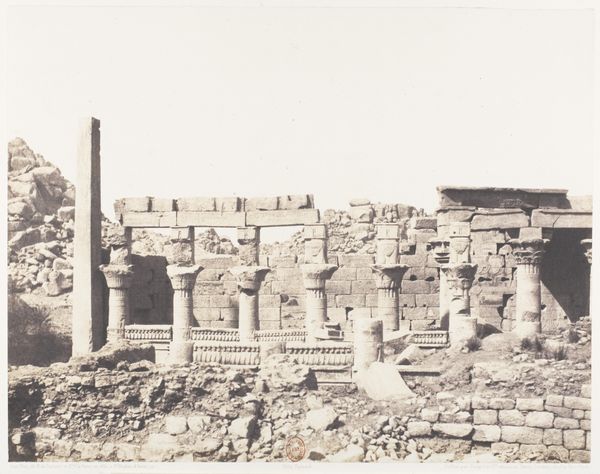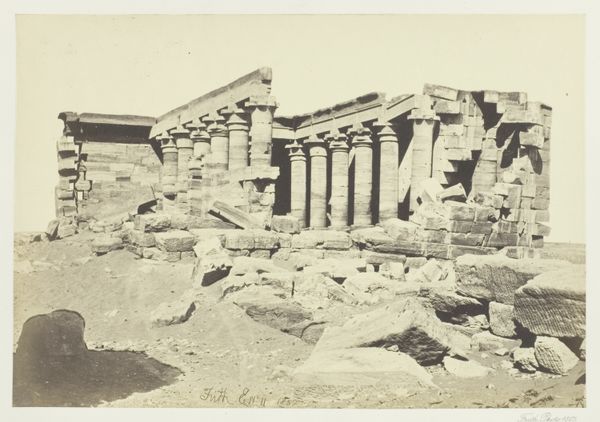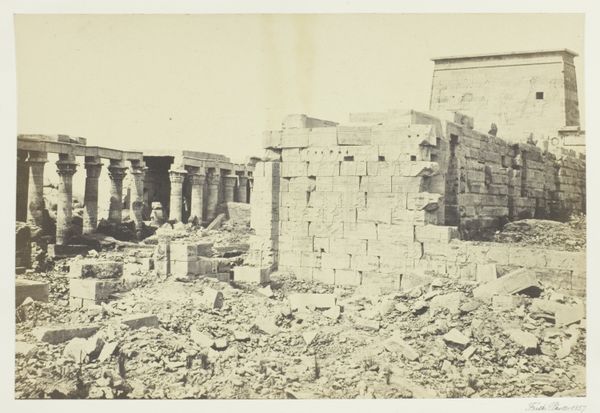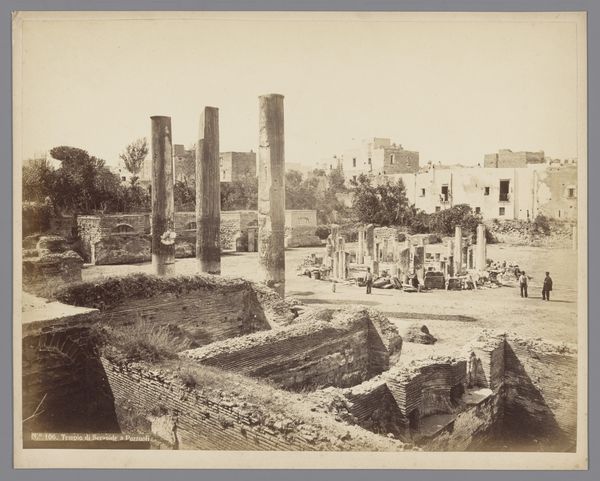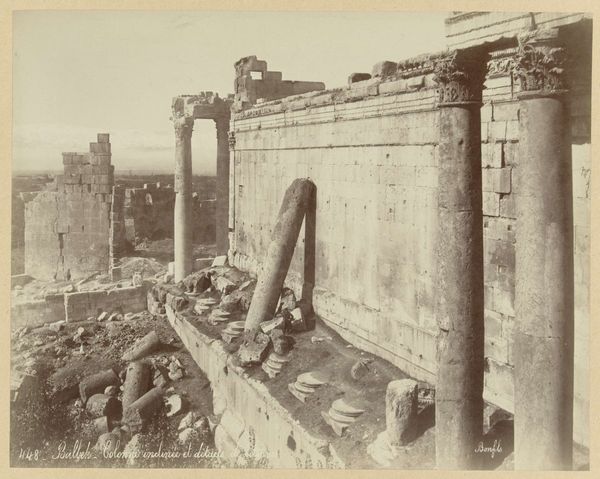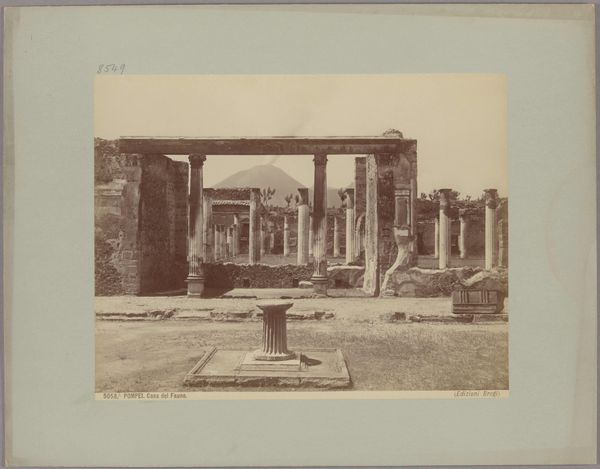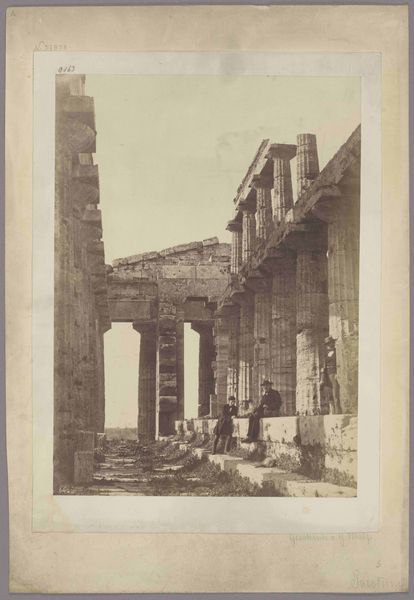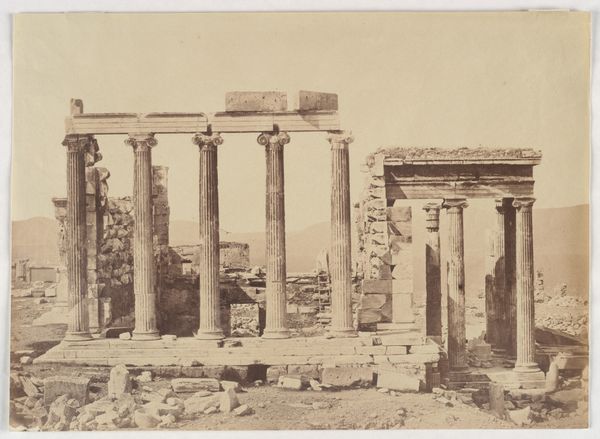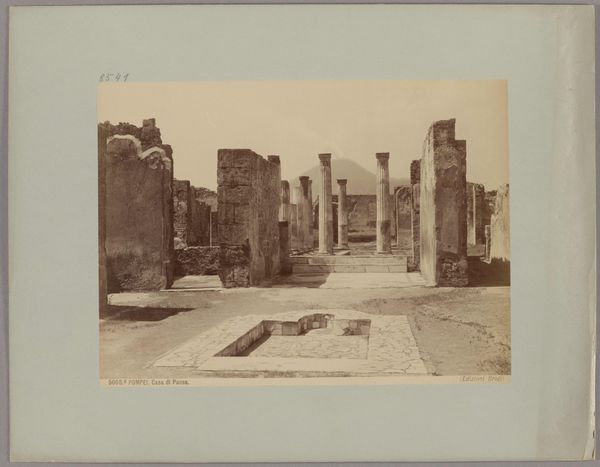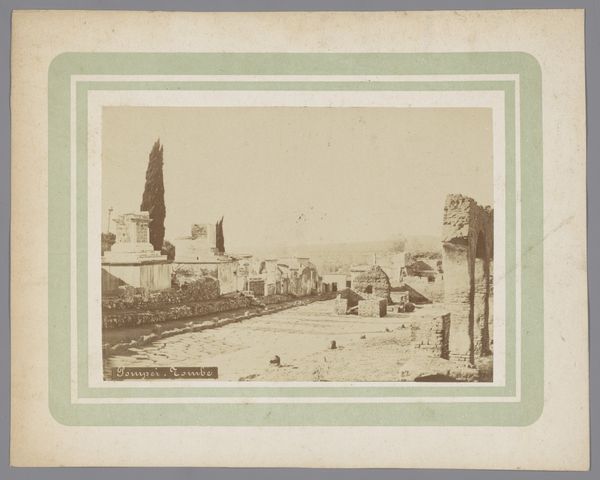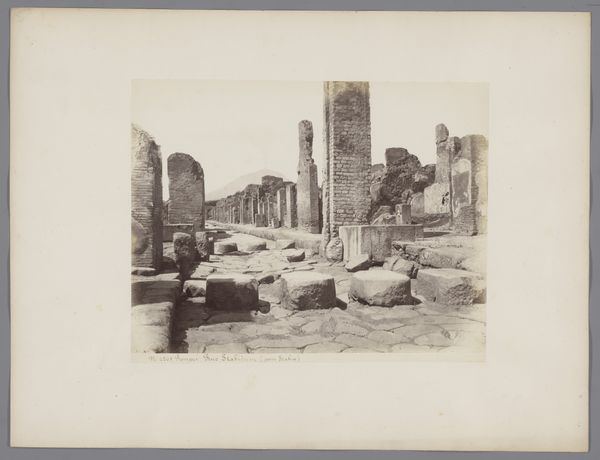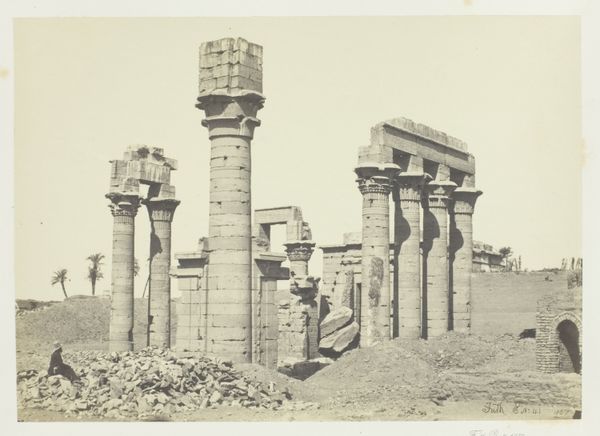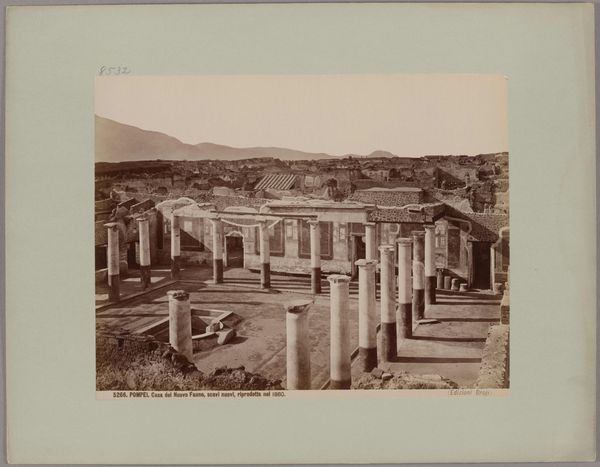
photography, albumen-print
#
greek-and-roman-art
#
landscape
#
classical-realism
#
photography
#
19th century
#
watercolor
#
albumen-print
Dimensions: height 196 mm, width 250 mm
Copyright: Rijks Museum: Open Domain
Curator: This albumen print by Giuseppe Incorpora captures the Ruins of Solunto in Palermo. The date range suggests it was made sometime between 1856 and 1914. Editor: What strikes me is the somberness. The sepia tone lends a feeling of decay and solemn reflection, which underscores the fragmented architecture. Curator: The image is dominated by these decaying structures. Notice how Incorpora positions the colonnades – the perspective leads your eye through a succession of forms. Observe, too, the meticulous capture of light and shadow, adding dimensionality. Editor: Yes, that stark contrast definitely accentuates a mood of lost grandeur. These ruins become potent symbols of fallen empires and the passage of time, and a palpable feeling of mortality pervades it. This particular archaeological site represents a collision of Phoenician, Greek, and Roman cultures. The picture memorializes those vanished peoples. Curator: Consider, then, the photographer's decision to document not the architecture’s pristine glory, but its ruin. Formally, the composition balances a clear foreground with a more obscure background, achieved through varied tonal contrasts. Editor: What are your thoughts on the lone figure near the photograph's center? He introduces a layer of melancholy—perhaps reflecting on the lost civilization that once thrived here. He stands almost like a modern-day flaneur. Curator: It gives the image scale, undoubtedly, but formally it provides contrast as well. Editor: Precisely, the human figure lends a focal point but also acts as a metaphorical link across history and modernity. We still look at ruins with the same awe and recognition of our historical continuity. Curator: By the strategic placement of elements—the ruins, the human form, and the interplay of shadow—the photographer reveals the architecture, yes, but also exposes relationships within the composition. Editor: Ultimately, this photograph speaks to the cyclical nature of civilizations, where triumph eventually transforms into traces. Curator: I’d say this close reading illustrates how photographic form is used here to mediate both subject and time.
Comments
No comments
Be the first to comment and join the conversation on the ultimate creative platform.
